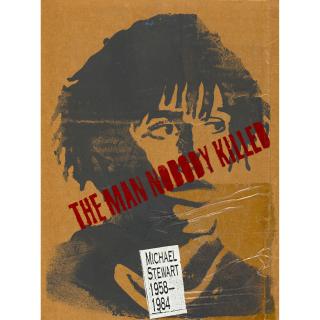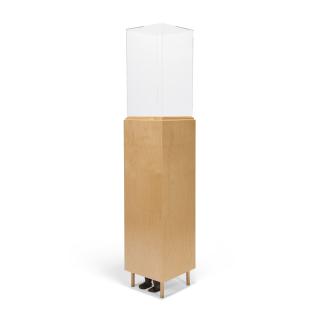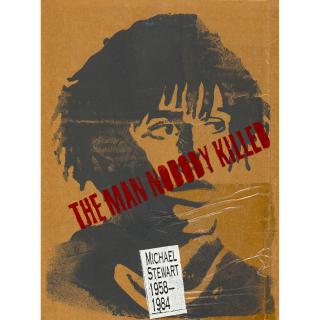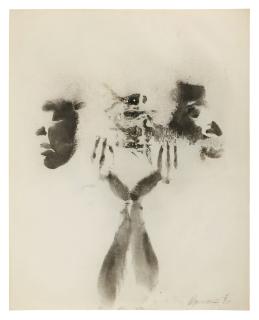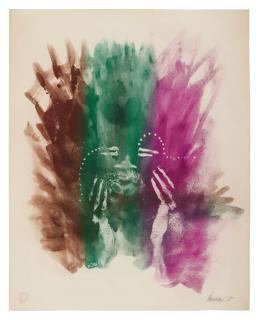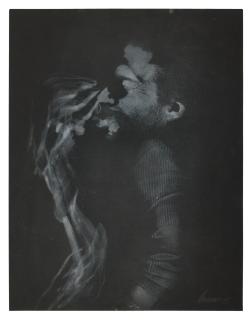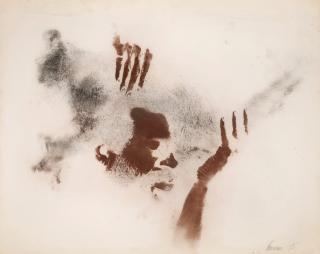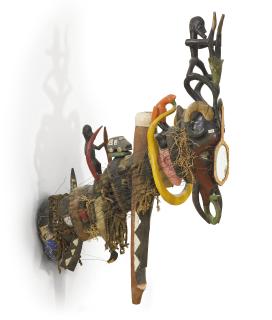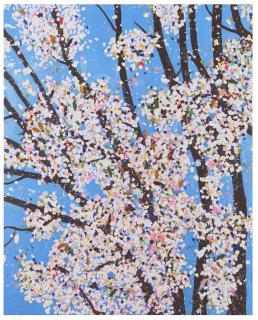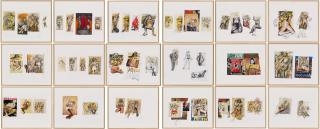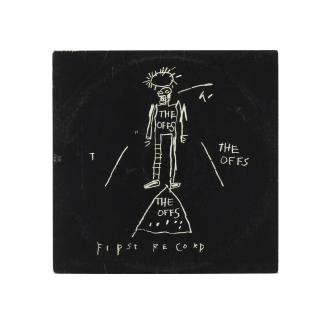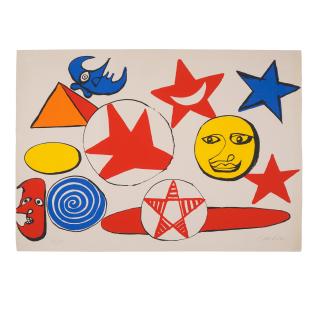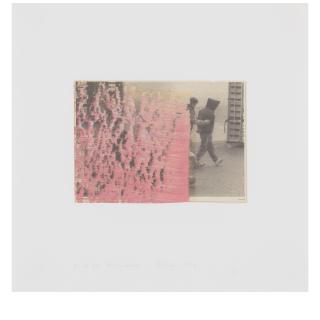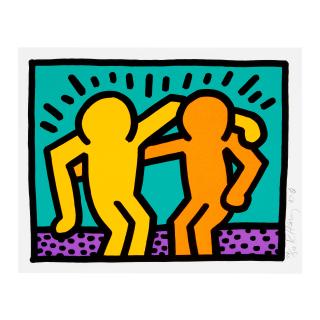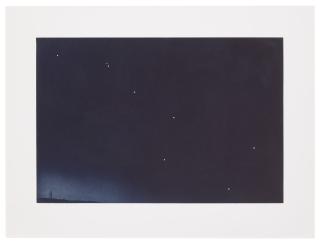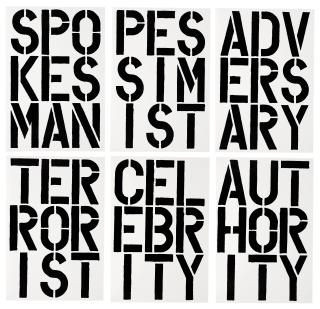David Hammons born 1943
The artist David Hammons
- Contemporary artist who draws attention to the ills for African American people.
- His public portrait of a white Jesse Jackson attracted international interest.
- Body prints and found object assemblages show influences of Dadaism and Arte Povera.
Born in Springfield, Illinois, in 1943, David Hammons moved to Los Angeles in 1962 and first attended the California Institute of the Art before moving on to the Otis Art Institute in 1968. Hammons uses his art to highlight the political, social and economic grievances of African-Americans in the U.S. In 1989, he painted a portrait of politician and civil rights activist Jesse Jackson - on a public wall in the middle of Washington. The year before, Jackson had narrowly lost the primary election for the presidential candidacy. Hammons, however, portrayed the Black politician as a white, blond, blue-eyed man and captioned the image with the question, "How Ya Like Me Now?" The action led him to catch the art world's eye internationally as well.
Before the artist finally participated in documenta IX in 1992 and his name was known across borders, his work was primarily divided into two areas: his body prints (1960s and -70s) and his found object assemblages (1980s). In the Body Prints, he depicted his body (sometimes others) by spreading margarine on the skin and hair and pressing himself onto life-size paper. He dusted the imprint with pigment powder.
He deliberately composed his assemblages from provocative materials: Elephant dung, chicken body parts, strands of hair, and bottles of cheap wine found their way into his works. He also creates installations and performances with similar foundations. Arte Povera and Dadaism influenced Hammon's works during this creative period. In the 1980s Hammons also made a name for himself with his public sculptures, for example Higher Goals (1986). It depicts a series of telephone poles up to nine meters high, which he fitted with basketball hoops and decorated with mosaics made of crown caps
More recently, he has increasingly produced Kool-Aid drawings. Hammons lives and works in New York. His work can be found in the permanent collections of such institutions as the Albright-Knox Art Gallery in Buffalo, the Museum of Contemporary Art in Chicago, the Museum of Contemporary Art, in Los Angeles, the Museum of Modern Art in New York, the Whitney Museum of American Art in New York, the SMAK, Stedelijk Museum voor Actuele Kunst in Ghent, and the Tate Britain in London.
Der Künstler David Hammons
- Zeitgenössischer Künstler, der auf die Situation afroamerikanischer Menschen hinweist.
- Sein öffentliches Porträt eines weißen Jesse Jackson zog internationales Interesse auf sich.
- Body Prints und Fundstück-Assemblagen zeigen Einflüsse des Dadaismus und der Arte Povera.
1943 in Springfield, Illinois, geboren zog David Hammons 1962 nach Los Angeles und besuchte dort erst das California Institute of the Art, bevor er 1968 zum Otis Art Institute ging. Hammons führt mit seiner Kunst die politischen, sozialen und ökonomischen Missstände für afroamerikanische Menschen in den USA vor Augen: 1989 porträtierte er den Politiker und Bürgerrechtsaktivisten Jesse Jackson – auf einer öffentlichen Mauer mitten in Washington. Im Jahr zuvor hatte Jackson nur knapp die Vorwahlen zur Präsidentschaftskandidatur verloren. Hammons stellte den Schwarzen Politiker allerdings als weißen, blonden, blauäugigen Mann dar und versah das Bild mit der Frage »How Ya Like Me Now?« Die Aktion führte dazu, dass er der Kunstwelt auch international auffiel.
Bevor der Künstler 1992 schließlich an der documenta IX teilnahm und man seinen Namen über Ländergrenzen hinweg kannte, teilte sich sein Werk vorrangig in zwei Bereiche: Seine Body-Prints (1960er und -70er Jahre) und seine Fundstück-Assemblagen (1980er Jahre). Auf den Body Prints bildete er seinen (manchmal auch andere) Körper ab, indem er Haut und Haare mit Margarine bestrich und sich auf lebensgroßes Papier drückte. Den Abdruck bestäubte er mit Pigmentpulver.
Seine Assemblagen setzte er bewusst aus provokanten Materialien zusammen: Elefantenmist, Körperteile von Hühnern, Haarsträhnen und Flaschen mit billigem Wein fanden Einzug in seine Arbeiten. Mit ähnlichen Grundlagen gestaltet er auch Installationen und Performances. Die Arte Povera und der Dadaismus beeinflussten Hammons Arbeiten in dieser Schaffensphase. In den 80er Jahren machte Hammons sich auch einen Namen mit seinen öffentlichen Skulpturen, beispielsweise Higher Goals (1986). Sie stellt eine Reihe von bis zu neun Meter hohen Telefonmasten dar, die er mit Basketballkörben versehen und mit Mosaiken aus Kronkorken geschmückt hat
In jüngster Zeit fertigte er vermehrt Kool-Aid-Zeichnungen. Hammons lebt und arbeitet in New York. Seine Arbeiten befinden sich in den ständigen Sammlungen von Häusern wie der Albright-Knox Art Gallery in Buffalo, dem Museum of Contemporary Art in Chicago, dem Museum of Contemporary Art, in Los Angeles, dem Museum of Modern Art in New York, dem Whitney Museum of American Art in New York, dem SMAK, Stedelijk Museum voor Actuele Kunst in Gent oder der Tate Britain in London.
David Hammons in a nutshell
In his Bliz-aard Ball Sale, Hammons sold perfect, round snowballs, sorted by size, during a performance in 1983. The Bliz-aard Ball is to be understood as an objet-d'aard that he traded on the so-called »black market« – on a »North African rug«. Hammons announced his street sale in advance in the newspaper. He shaped the balls with the help of moulds before sorting them from large to small on the carpet and offering them for sale. The art historian Elena Filipovic notes that the Bliz-aard Ball Sale is, on the one hand, a counter-design to the art world and the material desire of the 1980s and must also be seen in this context. Hammons wanted to give the values of the art world of the time a scathing sideways glance - leaving the rules of recognition to the elements. By taking the Bliz-aard Ball Sale seriously, one would be admitting to oneself that it only exists to slip between our fingers.
Behind the Body Prints is a series of paintings that Hammons worked on from 1968 to 1979. He greased bodies and hair, both his and others', with margarine or baby oil, rolled the body onto paper and sprinkled the prints with colour pigments or charcoal. He used the body as a drawing utensil and printing plate to explore new (unconventional) forms of image creation. With his Body Prints, he celebrated the black body and criticised the oppression of PoC. He complemented the prints with pointed titles, drawings, American flags or found objects symbolic of the USA of the 60s and 70s. He used his own body to depict both the everyday joys he experienced and the deep-rooted injustices of being a black person in America.
Several galleries represent or have represented David Hammons. He is currently under contract with Mnuchin Gallery in Manhattan, New York. But the Lévy Gorvy Gallery, White Cube or Hauser & Wirth have also represented the artist.
Häufige Fragen zu David Hammons
Bei seinem Bliz-aard Ball Sale verkaufte Hammons 1983 während einer Performance perfekte, runde Schneebälle, nach Größe sortiert. Die Bliz-aard-Kugel ist als objet-d'aard zu verstehen, das er auf dem sogenannten »Schwarzmarkt« handelte – auf einem »nordafrikanischen Teppich«. Vorab kündigte Hammons seinen Straßenverkauf in der Zeitung an. Er formte die Bälle mithilfe von Formen, bevor er sie auf dem Teppich von groß nach klein sortierte und zum Kauf anbot. Die Kunsthistorikerin Elena Filipovic stellt fest, dass der Bliz-aard Ball Sale einerseits ein Gegenentwurf zur Kunstwelt und der materiellen Begierde der 80er Jahre ist und auch in diesem Kontext gesehen werden muss. Hammons habe damit einen den Werten der damaligen Kunstwelt einen vernichtenden Seitenblick zuwerfen wollen – die Regeln der Anerkennung überließ er damit den Elementen. Indem man den Bliz-aard Ball Sale ernst nehme, gestünde man sich ein, dass er nur existiere, um zwischen unseren Fingern zu zerrinnen.
Hinter den Body Prints steckt eine Serie von Bildern, an der Hammons von 1968 bis 1979 arbeitete. Er fette Körper und Haare, sowohl seinen als den von anderen, mit Margarine oder Babyöl ein, rollte den Körper auf Papier ab und bestreute die Abdrücke mit Farbpigmenten oder Kohle. Er nutzte den Körper als Zeichenutensil und Druckplatte, um neue (unkonventiolle) Formen der Bildgestaltung zu erforschen. Mit seinen Body Prints feierte er den Schwarzen Körper und kritisierte die Unterdrückung von PoC. Er ergänzte die Prints mit pointierten Titeln, Zeichnungen, amerikanischen Flaggen oder gefundenen Objekten, die symbolisch für die USA der 60er und 70er standen. Seinen eigenen Körper nutzte er, um sowohl seine erlebten alltäglichen Freuden als auch die tief verwurzelten Ungerechtigkeiten als Schwarzer Mensch in Amerika zu verbildlichen.
Mehrere Galerien vertreten oder vertraten David Hammons bereits. Derzeit steht er bei der Mnuchin Gallery in Manhattan, New York unter Vertrag. Aber auch die Lévy Gorvy Gallery, White Cube oder Hauser & Wirth haben den Künstler bereits vertreten.


